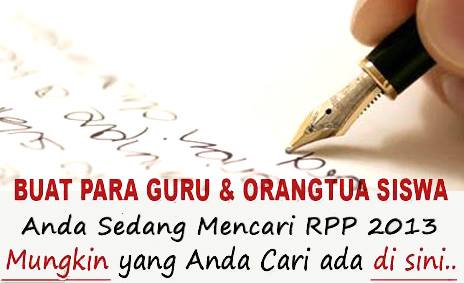Pagi ceria sahabat-sahabat SBI (Study bahasa Inggris ), how are you today? It is wonderful ……
Ada yang beda nih pada postingan kali ini. Saya mencoba untuk berbagi pengetahuan mengenai RPP ( Rencana Pelaksanaan Pembelajaran ) atau dalam bahasa Inggris di kenal dengan “ Lesson Plan “… Buat sahabat SBI yang butuh references berupa contoh RPP, yuk di pelajari pada artikel berikut ini !
[su_spoiler title=”Example Lesson Plan For SMA Class II” open=”yes” style=”fancy” icon=”caret”]
School : SMA ……………………..
Subject : English
Class : XI
Semester : II
Allocation Time :1 x 20 minutes
Standard of Competence
Listening
Understanding the oral form of narrative monolouge text, spoof and horatory exposition accurately, smoothly, and thanked in the context of everyday life and acces to knowledge.
Basic Competence
Responding to the meaning of the text using variety of simple monolouge spoken language accurately, fluently and accaptable in text form : narrative, spoof and hortatory exposition.
Indicator
- Responding monolouge discourse narrative
- Answering question from the narrative text which was read.
Instructional Objectives
After following the instructional student can:
- Responding monologue discourse narrative.
- Answering the questions from the narrative text which was read.
Summary of matterials
listening
Theme : telling story.
Skill : listening
Narrative
Narrative text is a kind of text to retell the story that past tense. The purpose of the text is to entertain or to amuse the readers or listeners about the story.
The generic structure of Narrative text :
Orientation :
It set the scene and introduce the participants (it answers the question : who, when, what, and where).
Complication :
Tells the problems of the story and how the main characters solve them.
Resolution :
The crisis is revolved, for better or worse.
Re-orientation :
The ending of the story.
Evaluation :
The stepping back to evaluate the story or the moral message of the story
Linguistic features :
- Use active verbs.
- Use past tense.
- Use conjunction.
- The first person (I or We) or the third person (He, She, or They).
- Use specific nouns.
- Use adjective and adverbs
The smartest animal
Once there was a farmer from Laos. Every morning and every evening, he ploughed his field with his buffalo.
One day, a tiger saw the farmer and his buffalo working in the field. The tiger was very surprised to see a big animal listening to a small animal. The tiger wanted to know more about the big animal and the small animal.
After the man went home, the tiger spoke to the buffalo; “you are so big and strong. Why do you do everything the man tells you?” The buffalo answered; “oh, the man is very intelligent”.
The tiger asked; “can you tell me how intelligent he is?”. “No, I can’t tell you”, said the buffalo; “but you can ask him”
So the next day the tiger asked to the man; “Can I see your intelligence?”. But the man answered; “it at home”. “Can you go and get it?” asked the tiger. “Yes” said the man; “but I am afraid you will kill my buffalo when I am gone. Can I tie you to a tree?”
After the man tied the tiger to the tree, he didn’t go home to get his intelligence. He took his plough and hit the tiger. Then he said; “Now you know about my intelligence even you haven’t seen it.
Time Allocation
- Pre –activities : 5 minutes
- Whilst : 10 minutes
- Post activities : 5 minutes
Instructional Methods
Learning method : three-phrase teqhnique (pre-reading, whilst reading, post reading)
Leaning Activities
Pre Activities
- Greeting the students
- Asking condinition of students
- Doing aprreception
Whilst Activities
- The teacher explains about the matterials
- The students reads text
- The students listen from the narrative text was read
- The students answer the question
- The teacher give students score
Post Activities
- The teacher asks whatever the students have problem in teaching learning process
- The teacher makes a conclusion about material
- The teacher closes the lesson
Source and Matterials
- Copy of matterials
- Speaker
- Book a package Erlangga (Look a Head 2)
Scoring
- The true answer of the work sheet :5 x 20 =100
- Maximal value = 100
Bandar Lampung,………………
|
Head Master ………………………………
|
Teacher …………………….. |
[/su_spoiler]
[su_spoiler title=”Example Lesson Plan For SMA Class II (I) Odd” style=”fancy” icon=”caret”]
School : SMA ………………………
Subject : English
Class/Semester : X1/(1) Odd
Allocation time : 1 x 20 minutes
Standard of competence :
Understanding the meaning of the conversation transactional/interpersonal formally in the context of daily life. Reveals the meaning of the monologue in the form of spoof accurately, smoothly, and acceptable in the context of daily life and to access of science.
Basic of competence :
Responds the meaning of the text using a various simple monologue oral language accurately, fluently and acceptable in text form: spoof. Reveals the meaning of the text accurately, smoothly and grateful that use different languages spoken in the form: spoof.
Indicator :
- Read word, phrase and sentence with the correct spell based on the spoof text.
- Reading the spoof text loudly and carefully.
Kind of text : Spoof
Theme : Telling Funny Stories
Skill : Reading
The purpose of learning :
- Student’s pronunciation is correct in read the text.
- Read the spoof text loudly and carefully.
The material :
Read the story.
|
Learning method/teaching : Observation
Learning Activities :
Pre-activity (2 minutes)
- Greeting class
- Checking students
- Doing apperception
Post-activity (14 minutes)
- Teacher explains about the material to the students.
- Teacher gives example to read the text and after she read one sentence the students follow her.
- Teacher asks the students to read the text in front of class.
- Teacher corrects student’s spelling.
- Teacher gives a question to the students.
Final activity (4 minutes)
- Teacher gives flesh-back about the material.
- Concluding the material.
- Teacher closes the lesson.
Source : Look Ahead an English Course
Tools : Papers, relevant book (Look Ahead an English Course)
Scoring :
- Techniques
- Oral test
- Type
- Oral responding
The method of scoring : The total maximal score is 100
The column of scoring :
| Element | Score |
| Content | 25 |
| Fluently | 25 |
| Intonation | 25 |
| Performance | 25 |
Standard of each Element :
| Excellent | 21-25 |
| Very good | 16-20 |
| Good | 11-15 |
| Average | 6-10 |
| Poor | <5 |
Bandar Lampung,………………
|
Head Master ……………………………… |
Teacher ……………………..
|
[/su_spoiler]
[su_spoiler title=”Example Lesson Plan For SMA Class III (I) Odd” style=”fancy” icon=”caret”]
School : SMA………………………………..
Subject : English
Class/Semester : XII/I
Allocation time : 2 X 45 minutes
Standard of Competence : Writing
Expressing the meaning in writing the short functional text and simple essay of report in the daily life.
Basic of competence :
Expressing the meaning in short functional text, formal and informal with using language manner in accurate, fluent, being received in the context of daily life.
Indicator :
- Using accurate grammar, vocabulary, punctuation mark, spelling and the role of writing text report.
- Produce text in form of narrative.
Theme : Tell me about it
Skill : Writing
The purpose of learning:
After the following of the instructional the students can:
- Using accurate grammar, vocabulary, punctuation mark, spelling and the role of writing text report.
- Produce text in form of report.
The material of learning:
Report
- Purpose: To describe the way things are, with reference to a range of natural such as man-made animals, plants and social phenomena in our live.
- Generic Structure:
- General Classification; tells what the phenomenon under discussion is. And introduces the topic of the report such as the class or sub-class.
- Identification or Description; tells what the phenomenon under discussion is. Like in terms of (1) parts, (2) qualities, (3) habits or behavior.
- Language Features;
- The use of general nouns (e.g.: reptiles, orchids)
- The use of relating verbs (e.g.: is, are, has)
- The use of present tense, it uses to explains something generally (e.g.: Komodo dragons usually weight more than 160 kg)
- The use of behavioral verbs (e.g.: Snakes often sunbathe in the sun)
- The use of technical terms (e.g.: water contains oxygen and hydrogen)
- The use of topic sentence to arrange some of information.
- The example of repot text
Crocodiles
Crocodiles are rather ‘lizard-like’. They have long tails and the climbs are short and straddled sideways. Crocodiles belong to reptiles. The elongated crocodiles are probably the most distinctive features. The head is typically one-seventh the total body length of and the species has a narrow or broad snout.
Crocodiles have a ‘minimum exposure’ posture in water, in which only the eyes, ears and nostrils lie above the water’s surface. This ‘minimum exposure’ posture has obviously been important to crocodiles throughout their evolution.
(Taken From: Look Ahead 2 for Senior High School Students).
- The questions
Make your report base on the picture and clue below minimum five sentences!
Clue- What is it?
- Where you can find it?
- Mention parts of body!
- Habit or behavior
Learning method: Three-phase technique (Pre-writing, Whilst writing, Post writing).
Activities steps:
Pre activities
- Greeting class
- Praying, asking the students condition and checking the attendance list.
- Doing apperception.
Whilst activities
- Teacher explains about the material.
- Teacher gives an example about text report.
- Teacher asks students to make groups. Every group consists of two students.
- Teacher gives exercise in group.
- Teacher asks students to take the paper sheet work in front of the class.
- Teacher asks the students to do their exercise on their paper with their partner.
- Teacher supervises the students work.
- Teacher asks some of students to write their work in the white board.
- Teacher checks students’ work together.
- Teacher asks the students to submit their work.
Closing activities
- Teacher and the students discuss about difficulties while learning process.
- Teacher gives feedback about the material.
- Teacher gives homework.
- Teacher closes the lesson.
Material: Expressing Permission
Source : Look Ahead
Tools: Picture and copy sheet work, board marker, relevant book (Look Ahead)
Scoring:
- Technique : writing test
- Type : Writing Practice
The method of scoring: The total maximal score is 100
The column of scoring:
| Element | Score |
| Spelling | 25 |
| Punctuation | 25 |
| Grammar | 25 |
| Content | 25 |
Bandar Lampung,………………
|
Head Master ……………………………… |
Teacher ……………………..
|
[/su_spoiler]
[su_spoiler title=”Example Lesson Plan For SMA Class III (I) Odd” style=”fancy” icon=”caret”]
School : SMA ………………………………………….
Subject : English
Class/semester : XII/1
Time : 2 X 45
Meeting : The First Meeting
Skills : Reading
Standard Competence : 4. Understanding the functional meaning of the text short and simple form of report, essay, narrative and analytical exposition in the context of everyday life and to access knowledge
Basic Competence : 5.1 Responding to the meaning in the short functional text official and unofficial variety of written language that uses an accurate, current and acceptable in the context of daily life
Theme : passive voice
The Purpose of Instructional
- Reading aloud
- Identification type of sentence
The material of instructional
Form of Passive
S + to be + V3/ Past Participle
Example: A letter was written.
When rewriting active sentences in passive voice, note the following:
- The object of the active sentence becomes the subject of the passive sentence
- The finite form of the verb is changed (to be + V3/ past participle)
- The subject of the active sentence becomes the object of the passive sentence (or is dropped)
Method : Reading Ability
- Media : Paper
- Activity steps
| No | Study activity | Times |
| 1 | Pre activity
|
5 |
| 2 | Whiles activity
|
7 |
| 3 | Past activity
|
3 |
Evaluation
- Type : Reading text
- Instrument : Reading
Feel in the blanks by changing the verb in brackets into the correct from of passive
A volcano is a mountain which (1. From) by the eruption of material from the earth’s interior through a central opening or groups of openings. Volcanoes (2. Scatter) over the world. Volcanoes (3. Can divide) into three categories based on volcano form and type of volcanic activity. They are Shield, Composite, and Explosion volcanoes.
A shield volcano (4. Build) chiefly of layers of basalt (a dark, heavy lava). A few shield volcanoes (5. Compose) of and sate (a related, less dense type of lava).
A composite volcano has more frequent and violent explosive eruptions than shield volcanoes do. Lava (6. May extrude) from either central crater of fissures on a volcano’s sides.
Explosion volcanoes (7. Compose) of inclined layers of pyroclastic debris and contain no lava. During an eruption, debris (8. Eject) from the crater. Most explosion volcanoes (9. Build) during one period of eruption.
Answer
- Is formed
- Are scattered
- Can be divided
- Is built
- Are composed
- May be extruded
- Are composed
- Is ejected
- Are built
| Element | Score |
| Pronoun | 50 |
| Fluency | 50 |
Source/material : Look a head 2
Bandar Lampung,………………
|
Head Master ……………………………… |
Teacher ……………………..
|
[/su_spoiler]
[su_spoiler title=”Example Lesson Plan For SMA Class II (I) Odd” style=”fancy” icon=”caret”]
School : SMA ………………………………………..
Subject : English.
Class/Semester : XI / 1.
Competence default : Expressing the meaning of very simple transactional conversations and interpersonal to make interaction with the closest environment.
Competence basic : Respond purpose in transactional and interpersonal conversation using simple area language , accurate, fluently manner and the topic to interest with approach area that involved speech act in the all day existence context.
Indicator :
- Knowing about a Funny Stories.
- Practicing of Telling a Funny Stories.
Theme : Telling a Funny Stories.
Aspect / Skill : Speaking.
Time allocation : 1 x 20 minutes.
Learning Target :
At the early learning, student can:
- Students can know what is a Funny stories.
- Students can practice about Telling a Funny stories
Learning material :
a. Communication Practice :
- Interview a partner about a Funny stories.
- Report an information about a Funny stories.
b. Developing Oral Skill.
- Questionare and answer option.
Teaching method: TSI ( Three steps Interview ).
Activity steps : Pre activity ( 2 minutes ).
- Presence (reporting who are present and absent).
- Teacher ask to the students related about funny stories.
- Teacher giving information about funny stories.
Activity ( 14 minutes ).
- Teacher ask to students grape their partner in 2 people.
- Teacher gives a group some question.
- Students do interview a partner back and forth according the questions.
- Teacher ask to students report an interview in front of class
Post activity ( 4 minutes ).
- Teacher evaluating of students speaking monolog.
- Teacher gives feedback about the material.
- Questioning and answering the material that have not understood.
- Teacher closed the meeting.
Learned source :
Book : Erlangga Look a Head 2.
Estimation :
Instrument :
Teacher give information about funny stories is arranged in the generic structure of Orientation, Events, and Twist. Because of this Twist (an unpredictable ending), the story seems very funny. Take a look on the following example of spoof text!
One day Nasreddin had been invited to the dinner party. He went to the party by wearing old clothes. When he arrived in the party, nobody looked at him and nobody gave him a seat. He got no food in the party so he went home and change his clothes. Next he put on his best clothes. He wore his newest coat and went to the party again. The host at once got up and came to meet him. The host offered him the best table and gave him a good seat and served him the best food. Nasreddin sat and put off his coat. He put his coat and said; “Eat the food, Coat!” the hosts and guests were very surprised and asked Nasreddin; “What are doing?” Nasreddin replied calmly; “When I came here with my old clothes, nobody looked at me. Then I went home and put on my best clothes. I came back in my newest coat and you all give me this best food and drink. So, you give food to my coat instead of me”. Getting Nasreddin’s answer, they just shook the head.
Generic Structure Analysis :
- Orientation: one day, Nasreddin was invited to a dinner party
- Event 1: He was in the party with his old cloth
- Event 2: He was in the party with his best newest coat
- Twist: Among the hosts and guests, he asked his coat to eat the served food.
- Do an Interview with a partner according this Question :
- What’s your name ?
- Where do you live ?
- What’s your hobby ?
- Can you tell me your funny stories ?
- How do you get a funny stories ?
- When do you get a funny stories ?
- Can you tell me your ambition after getting a funny stories ?
- Scorring :
- The method of scorring : The total maximal score is 100.
- The column of scorring :
| Element | Score |
| Content | 25 |
| Fluently | 25 |
| Intonation | 25 |
| Performance | 25 |
Standard of each Element :
| Excellent | 21 – 25 |
| Very Good | 16 – 20 |
| Good | 11 – 15 |
| Average | 6 – 10 |
| Poor | < 5 |
Bandar Lampung,………………
|
Head Master ……………………………… |
Teacher ……………………..
|
[/su_spoiler]
[su_spoiler title=”Example Lesson Plan For SMA Class II (I) Odd” style=”fancy” icon=”caret”]
School : SMA ………………………………………………………
Subject : English
Class/Semester : XI (Eleventh) / I (Odd)
Allocation time : 1 x 20 minutes
Skill : Speaking
Standard of competence :
Expressing the meaning of very simple transactional and interpersonal conversation to make an interaction with the closest environment.
Basic of competence :
Respond purpose in transactional and interpersonal conversation using simple area language, accurate, fluently manner and the topic to interest with approach area that involved speech act in the all day existence context.
Indicator :
- Expressing opinions of situation.
- Expressing agreement about an opinion.
Learning target :
- Students can Express opinions of situation.
- Students can Express agreement about an opinion.
Learning Activity
Pre-activity (2 minutes)
- Greeting class
- Checking students
- Giving description about the material
Post-activity (14 minutes)
- Teacher gives explanation about the material.
- Teacher divides class for three groups.
- Teacher gives group lesson cards.
- Students discuss their job.
- Students present their opinion based the material.
Final activity (4 minutes)
- Teacher gives supporting for the students’ jobs.
- Teacher gives flesh-back about the material.
- Teacher gives Homework.
- Teacher closes the the meeting
Material : My city
Method : Discussion
Teacher makes some groups to discuss about the material. Teacher also monitors students when they are doing their discussion.
Tools : Marker, relevan book(Erlangga, 2007), LCD, Laptop, whiteboard.
scorring :
The method of scoring : The total maximal score is 100
The column of scoring :
| Element | Score |
| Content | 25 |
| Fluently | 25 |
| Intonation | 25 |
| Performance | 25 |
Standard of each Element :
| Excellent | 21-25 |
| Very Good | 16-20 |
| Good | 11-15 |
| Average | 6-10 |
| Poor | <5 |
media : LCD, Laptop, lesson cards
instrument : Make your opinion base from the picture!
simple material: Erlangga, 2007, page 79
expressing opinions
asking other people’s opinions:
- What do you think of ….
- Is that right that ….
- Do you think it’s going ….
- How do you like ….
- What’s your opini?
Expressing opinions :
- In my opinion ….
- I personally believe ….
- I personally think ….
- I think that ….
- In my case ….
- From my poin of view ….
Bandar Lampung,………………
|
Head Master ……………………………… |
Teacher ……………………..
|
[/su_spoiler]
[su_spoiler title=”Example Lesson Plan For SMA Class I (I) Odd” style=”fancy” icon=”caret”]
School : SMA ………………………………………………..
Subject : English
Class/Semester : X (Tenth) / II
Allocation time : 2 x 45 minutes
Standard of competence :
- Understanding the meaning of short functional texts and simple essay in recount, narrative and procedure in daily context and for accessing science.
Basic of competence :
- Responding the meaning of simple short functional texts (like as: announcements, sponsor, invitation and etc.) formal and informal accurately, fluency and can be understood in daily context and for accessing science.
- Responding the meaning and rhetorical steps of essay writing text accurately, fluency and can be understood in daily context and for accessing science in recount, narrative and procedure.
Indicator :
- Understanding the meaning of functional text like as narrative.
- Understanding the meaning and rhetorical steps of narrative essay writing.
Kind of Text : Fables
Theme : Telling Stories
Skill : Reading
The purpose of learning : In the end of the activities, students be able to
- Understand the meaning of functional text like as narrative.
- Understand the meaning and rhetorical steps of narrative essay writing.
The material :
TOM & JERRY
Once upon a time, there was a cat and a mouse. The cat’s mane was Tom and the mouse name’s was Jerry. They always fight everyday. (Orientation)
One day, Jerry took Tom’s cheese. Jerry bought the cheese quietly. Jerry did not aware if at that time Tom saw him. (Complication)
And then, Tom took a wood to strike Jerry. Jerry was so surprised. But, Jerry still could avoid and run away. (Complication)
After that, Tom put the wood and run to chase Jerry. Jerry run very fast. Both of them run around the yard.(Complication)
In the end, Jerry was so tired and Tom successed to chase Jerry. (Resolution)
Learning method/Teaching : There-phase technique (pre speaking, whilst speaking, post speaking)
Teaching Learning Activities :
Pre Activities
- Greeting the students.
- Praying, asking the students condition and checking the attendance list.
- Doing apperception.
Content activity
- Teacher explains about the material to the students.
- Teacher divides students become three groups
- Teacher gives some pictures and fables texts
- Teacher asks student to read the texts
- Teacher asks students to arrange the picture and the texts.
- Teacher corrects every group’s result.
- Teacher asks students to read the fable.
Closing activity
- Teacher and students discuss about the difficulties while learning process.
- Concluding the material
- Teacher gives homework.
- Teacher closes the lesson.
Source : Look ahead
Scoring :
- Techniques
- Oral test
- Type
- Reading comprehension
- Reading aloud
Test
TOM & JERRY
Once upon a time, there was a cat and a mouse. The cat’s mane was Tom and the mouse name’s was Jerry. They always fight everyday.

One day, Jerry took Tom’s cheese. Jerry bought the cheese quietly. Jerry did not aware if at that time Tom saw him.



Base on the story above, please answer this question:
- What were the cat and mouse name?
- What did the cat take to strike the mouse?
- What did Jerry take from Tom?
- Where did they run?
- Did Tom success to chase Jerry?
The method of scoring : The total maximal score is 100
The column of scoring :
| Element | Score |
| Manner | 25 |
| Fluently | 25 |
| Intonation | 25 |
| Performance | 25 |
Standard of each Element :
| Excellent | 21-25 |
| Very Good | 16-20 |
| Good | 11-15 |
| Average | 6-10 |
| Poor | <5 |
Bandar Lampung,………………
|
Head Master ……………………………… |
Teacher ……………………..
|
[/su_spoiler]
[su_spoiler title=”Example Lesson Plan For SMA Class I (II) Odd” style=”fancy” icon=”caret”]
School : SMA ……………………………………………
Subject :English
Class/semester :XI/I
Allocation :1 x 15 minutes
Standard of competence :
Expressing the meaning in writing the sort functional text and simple essay of spoof in daily life context.
Basic of competence :
Expressing the meaning and step the rhetorical in essay with using language manner write in accurate and accept in everyday life context in text form of spoof.
Indicator :
Produce text in from of spoof Using noun and pronouns, and time connectives and conjunctions in delivery a report.
Summary of Materials: Writing
Theme : Spoof
Skill : Writing
The purpose of learning :
- Using noun and pronouns, time connectives and conjunctions to write the spoof text.
- Write the spoof text
The simple material:
Spoof
Purpose :
To tell an event with a humorous twist.
Text organization:
- Orientation
- Event: This is the sequence of event that can be more than one.
- Twist: Something that is fun.
Language Features:
- The use of action verbs: walked, laughed, ran away.
- The use of connectives: first, then, finally.
- The use of adverbial phrases of time and place: in the garden, two days ago.
- The use of the simple past tense: he walked away from the village.
The example of spoof text
We Don’t Subscribe To Any Newspapers
Jack was a university student. He studied history. At the end of the year, his history professor failed him in examinations and was told to leave the university.
The next day, Jack’s father went to see the professor. He urged the professor to let Jack continue his studies the following year. “He’s a good boy,” said Jack’s father,” and if you give him a chance this time, I’m sure he will improve a lot next year”.
“No, no! That’s quite impossible!” replied the professor. “Do you know, last month I asked him when Napoleon died, and he could no to answer it”.
“Please, sir, give him another chance “, said Jack’s father, “you see, we don’t subscribe to any newspapers in our house, so none of use even knew that Napoleon was ill”.
The Questions
- Why did Jack have to leave the university?
- What did his father try to do?
- What was his father’s excuse for him?
Time Allocation
Pre-activities : 5 minutes
Whilst : 10 minutes
Post activities : 5 minutes
Instructional Methods
Learning methods: three-phrase technique (pre-writing, whilst writing, post writing)
Teaching Learning Activities:
Pre Activities
- Greeting the students.
- Praying together.
- Asking the students condition and the checking the attendance list.
- Doing apperception.
Whilst
- Teacher explains about the material to the students.
- Teacher gives the copy material.
- The students make text spoof in letter.
- The teacher chooses randomly students to write their writing in the whiteboard.
- Teacher checks student work together.
Closing activity
- Teacher asks the students about material to day.
- Teacher makes a concluding about the material.
- Teacher gives homework
- Teacher closes the lesson.
Source : Book a package Erlangga (Look A Head)
Tools : Copy of the material,
Scoring :
- Techniques : Oral text
- Type : Oral responding
The method of scoring : The total maximal score is 100.
The column of scoring :
| Element | Score |
| Spelling | 25 |
| Punctuation | 25 |
| Grammar | 25 |
| Content | 25 |
Bandar Lampung,………………
|
Head Master ……………………………… |
Teacher …………………….. |
[/su_spoiler]
Demikian postingan saya mengenai RPP bahasa Inggris untuk jenjang SMA, semoga sahabat SBI ( Study bahasa Inggris ) dapat menggunakannya… salam sukses selalu ^_^
[su_spoiler title=”Baca juga artikel lainnya :” open=”yes” style=”simple” icon=”caret”]
- Direct and Indirect Speech : Pengertian, Penjelasan Lengkap dan Cara Perubahannya
- Pengertian Showing Expressions Politeness dan Contoh Percakapan
- Telling The Time : Cara Menulis dan Membaca Waktu dalam Bahasa Inggris
- Pengertian, Rumus, Contoh Kalimat dan Soal Present Perfect Tense
- Pengertian Degrees of Comparison Beserta Contoh Kalimat dan Soal
- Materi Lengkap Recount Text Beserta Contoh Dan Terjemahannya Terbaru 2016
- Rearranging Words/Sentences : Cara Rahasia Menjawab Soal dan Pembahasan
[/su_spoiler]
Originally posted 2024-04-05 06:12:33.
